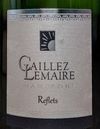Musar Dinner
Tim's, SF
Tasted Thursday, December 15, 2016 by RajivAyyangar with 524 views
Introduction
Evernote: https://www.evernote.com/l/ABYB6E-nI2tO2pVWLBQ2VnAk3x825aM0TeM
With Michael H, Ashish, Tim, Elliott, Alejandro, Nicole
An extravagant celebration of Musar and of MH's recent passing of the Advanced Somm exam!
CHEESE
Munster d'Alsace, a soft fruity blue, a drier nuttier blue, a superb goats milk washed-rind, a triple-cream.
FOIE GRAS
Absurdly large portions with apple-pear compote, rustic toast.
STEAK
Bone-in Ribeye (entrecôte) and Bavette from Olivier's.
RATATOUILLE
Pixar/Keller-style.
MEZZES
Chicken and vegetable rolls in philo dough.
---
A few notes on the progression of Chateau Musar wines, and the "Inflection Point":
My working model right now, based on conversations with Bartholomew Broadbent, Marc Hochar, and some other Musarophile friends, is that both whites and reds undergo an "inflection point" around 15-20 years, depending on the vintage. At the inflection, primary fruit drops out, and tertiary notes (which give the illusion of fruit) begin to emerge. Past the inflection point, this "tertiary fruit" intensifies with age, which explains why good bottles of older vintages tend to show more powerfully than younger bottles. Maybe there's a point around 40-50 years where even pristine bottles start to diminish, but I don't have enough experience with older vintages to tell.
To describe the inflection points in concrete sensory terms:
Whites start off with fresh apple and ripe citrus notes that diminish over the first 10-15 years. Post-inflection they take on aromas of honey, bee pollen, sweet carrot, baked yam, along with a baked-apple-balsamic note. These tertiary notes intensify with age. Wines that are mid-inflection (like the '06) can seem neutral and shut-down, because the primary fruit is gone but the tertiary notes haven't become apparent yet.
Throughout their development there is a backdrop of bruised apple (oxidation), slight Brett (in most vintages), wax, ethyl acetate (VA), and acetic notes (giving a balsamic impression).
Reds start off with varietal aromas of blackcurrant, slight stewed bell peppers (cab), ripe red and black cherry (Cinsault/Carignane), along with characteristic Musarian oxidation, VA, acetic acid, and brett.
Post-inflection they take on a savory tamari-blackberry along with a sort of dried blackcurrant and cherry - like fruit seen through stained glass. This tertiary fruit actually intensifies with age.
The reds' progression parallels the whites'—mutatis mutandis—and wines that are mid-inflection (like the '99 was last year) can seem diminished and quiet when tasted next to post-inflection and pre-inflection wines.
Flight 1 - Bubbly (3 Notes)
Flight 2 - Musar Rose (2 Notes)
I loved both of these - need to get more!
Flight 3 - Musar Blanc (4 Notes)
These are special wines, and it's rare to taste them in a vertical deep enough to see the progression and inflection point.
Flight 4 - Musar Rouge (6 Notes)
The '98 was more robust and structured than I recall - it seems to be gaining in weight. The '89 was more detailed and beautiful than I've found in the past. Perhaps the absence of more powerful compatriots (e.g. the '95, '72, '99) allowed it to shine.
Flight 5 - Sherries (2 Notes)
I'd tasted the Toro Albala before, but the 100+ year old Conde de Aldama was a rare treat. The intensity and sweet-savoriness are what I remember the most.
Flight 6 - Royal Tokaji Company 2007 Single Vineyards (3 Notes)
All of these were superb, but I don't think I could tell them apart blind with any reliability. They struck me as incredibly similar.
According to the Royal Tokaji Company website, here are the expected differences between the single-vineyards (and some factoids):
Betsek
- Black volcanic topsoil contributes to a mineral, black-pepper character
Mezes Maly
- Name means "honey pot" and the character is likewise sweet and long.
- One of 2 first growths in the 1700 Rakoczi Classification.
- Loess soil, south-facing.
- Jointly owned by Royal Tokaji Company and... Hugh Johnson!
Szt Tamas
- Voluptuous apricot and plum jam with tobacco and chocolate (not sure where the chocolate is supposed to come from).
- One of the core vineyards of the Mád commune.


NV Caillez-Lemaire Champagne Reflets Brut 89 Points
France, Champagne
On the nose, lightly bruised apples with moderate intensity autolysis (brioche).
In the mouth, this is slightly on the riper side of Champagne - feels 5-7g RS. More oxidative than reductive. Well-integrated flavors on the palate. Finishes with yellow apples and slight berries.
Post a Comment / Do you find this review helpful? Yes - No / Report Issue
NV Henri Goutorbe Champagne Cuvée Prestige 88 Points
France, Champagne
Savory nose with brioche, stewed tomato, and stewed celery notes.
On the palate, expansive plush brioche (autolytic) and apples with high acid and yellow apples on the finish.
Post a Comment / Do you find this review helpful? Yes - No / Report Issue
2010 Charles Heintz Chardonnay Sabrina Marie 88 Points
USA, California, Sonoma County, Sonoma Coast
Interesting sweet tomato on the nose.
In the mouth, some brioche (autolytic), high acid. Broad but still fresh - more in the oxidative style.
Post a Comment / Do you find this review helpful? Yes - No / Report Issue